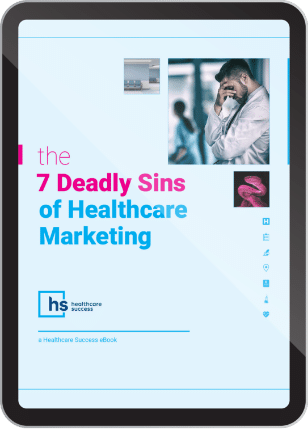Patient Satisfaction: What’s Your Plan for Leadership, Culture and Training?
 Some important national surveys about patient satisfaction have been in the news lately. The company credentials are highly respectable, and the healthcare marketing implications are significant.
Some important national surveys about patient satisfaction have been in the news lately. The company credentials are highly respectable, and the healthcare marketing implications are significant.
First on the street was the PricewaterhouseCoopers Health Research Institute (PwC, HRI) data that concluded, for healthcare consumers, personal experience is the number one reason for choosing a doctor or hospital.
And just as everyone was digesting the PwC numbers, J.D. Power and Associates released its 2012 National Patient Experience Study. A primary finding: patient satisfaction is mainly influenced by personal interaction with doctors, nurses and other staff.
Neither of these top line conclusions is completely surprising to healthcare thought leaders or forward-looking providers. With patient satisfaction increasingly tied to reimbursement for both hospitals and medical practices, patient satisfaction is simply smart business and a win-win proposition for both the patient and the provider.
The question then becomes, how can these studies provide guidance for goal setting and process improvement for achieving a positive patient experience?
Digging deeper into the PwC study…
Both reports are important, especially where the conclusions overlap. The PwC/HRI report tells us that “consumer perceptions are built across multiple channels—in person, online, on the phone and increasingly through non-traditional settings such as mobile devices and retail health clinics. Moreover, the ideal experience is increasingly being defined by non-clinical elements, such as convenience, customer service and staff attitude.
“When it comes to interacting with a hospital, doctor’s office or other healthcare provider, consumers are nearly twice as likely as those in the airline, hotel, and banking industries to say that staff friendliness and attitude dictate whether the experience was positive or negative. One third of consumers said they would be willing to switch their health insurance or healthcare provider if another company offered a more 'ideal experience.' ”
And from the Power and Associates report…
Patient satisfaction—or the lack of it—hinges on human interactions, according to the Power report. “Inpatients' experience with doctors and nurses represents 34 percent of their overall satisfaction, and is even higher among patients in emergency settings (43 percent). Among outpatients, doctors and other healthcare professionals represent 50 percent of overall satisfaction. Additionally, the hospital facility represents just 19 percent of inpatients' overall satisfaction.
"The study also shows that the most common types of problems that inpatients experience are related to staff service and attitude. Inpatients who say they had any problem with their room or hospital staff rate their overall experience 5.3 on a 10-point scale, compared with 8.7 among patients who didn't experience any problems with room or staff."
Both studies deserve an in-depth reading. But broadly interpreted, the most critical consideration in achieving patient satisfaction is in the personal interactions between the patient and everyone who has contact with that individual. (We believe the word “everyone” deserves emphasis.)
Patient expectations and perceptions can be influenced to some degree, but the more essential control factors in patient satisfaction are in leadership, training and the organizational culture. We wrote about this in our earlier post, The Elusive Patient Experience: Are You Wasting Money Trying to Hit the Wrong Target?
And we’d like to hear your point of view. Your comments are welcome.








